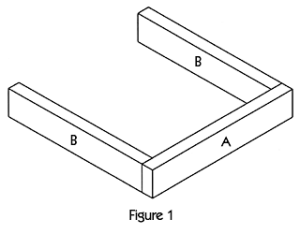Painting chalkboard walls has been popular for years, and not just for playrooms and children’s rooms. Homeowners have fun painting chalkboard walls in their kitchens for scribbling out recipes and grocery lists, and sometimes even create fancy chalkboard walls in their living rooms.
But chalkboard walls aren’t for everyone, and many people quickly tired of the chalky dust that seemed to get everywhere. They also didn’t like being limited to dark green or black walls so the chalk would show up properly.
Luckily, there’s now a way to take the creativity of a chalkboard wall and remove the mess and the design woe of having only two colour choices.
We love the new dry-erase coating from KRYLON spray paint. It comes in a fast-drying, easy to use aerosol can which provides a smooth, glossy finish to any surface.
Here’s the best part: KRYLON Dry Erase spray paint comes in both white and clear which means you can apply it over any paint colour. Yes, it’s true. A pale pink dry-erase board? Cheerful yellow? Cool blue? It’s up to you! (Oh, and it can go over any brand of paint, too.)
Once the dry-erase coating has cured for seven days, you can use it just like any other whiteboard with standard whiteboard markers. The wall will wipe perfectly clean, without any of the “ghosting” you sometimes see on old whiteboards. You know, those faded meeting notes from years past.
Ready for a little inspiration? Here are a few ways we’d love to see you incorporate KRYLON’s new Dry Erase spray paint in your home …
KIDS ROOMS
Imagine handing your kids a package of colourful dry-erase markers and telling them they can draw all over an entire wall! Think about the fun they would have with their friend
HOME OFFICE ORGANIZATION
Think about how much cooler it would be to jot your to-do list on the wall instead of on a piece of paper. You could even paint a simple time management grid with four quadrants so you could fill it out Stephen Covey-style.
PLAYROOMS
Pair the dry-erase coating with a magnetic paint, and you’ve got a multifunctional playroom wall. Craft little magnet characters or vehicles with your kids, and show them how to draw a world of roads and houses for their new toys to explore.
KITCHENS
Have a dedicated area for jotting down a grocery list without worrying about airborne chalk dust floating into everyone’s lunches. You could also write down recipe steps so you can reference them while cooking without touching your phone with gooey fingers.
MUDROOMS
How about a whiteboard wall above your kids’ backpacks and shoes, where everyone in the family can reference a huge calendar? Keep markers handy for writing down dentist appointments, team practices, lessons, birthday parties and who’s supposed to be where at what time.









